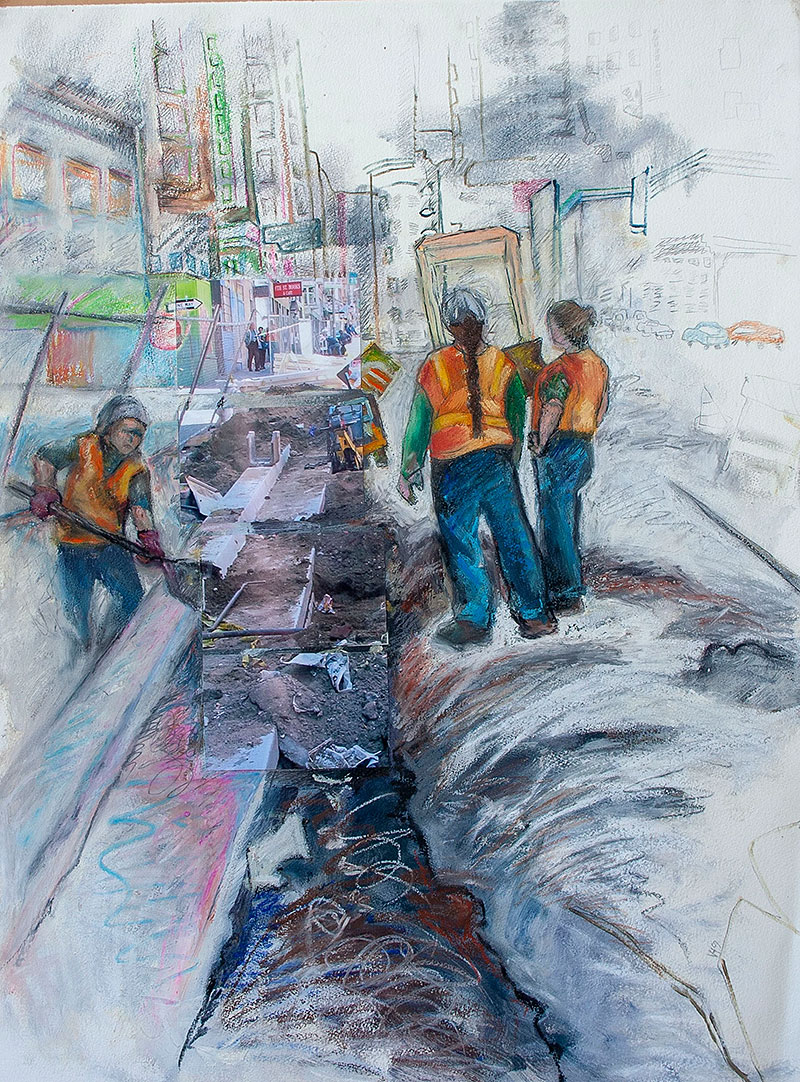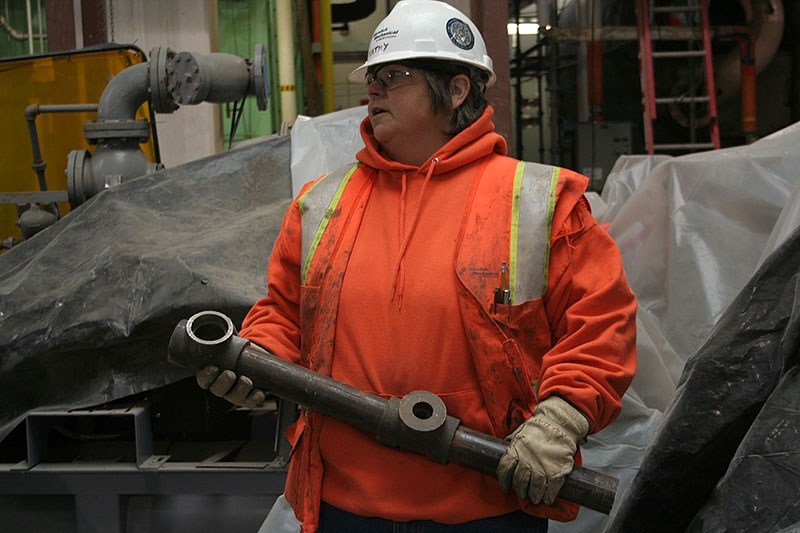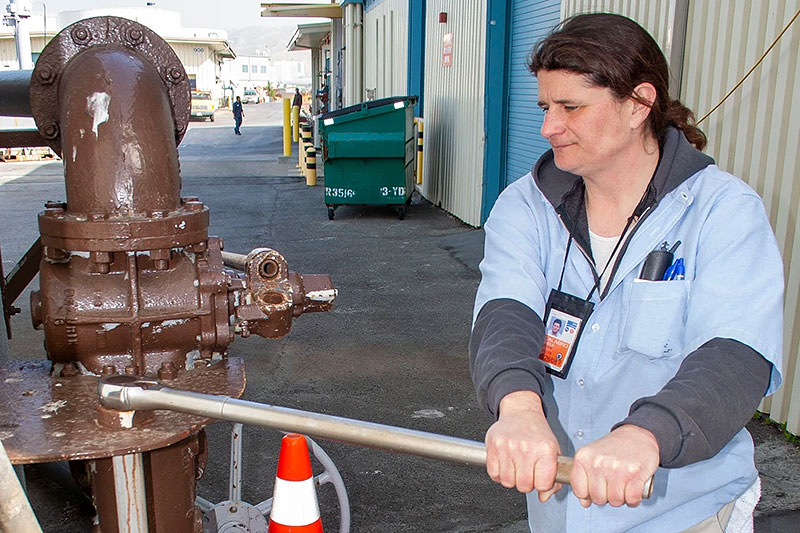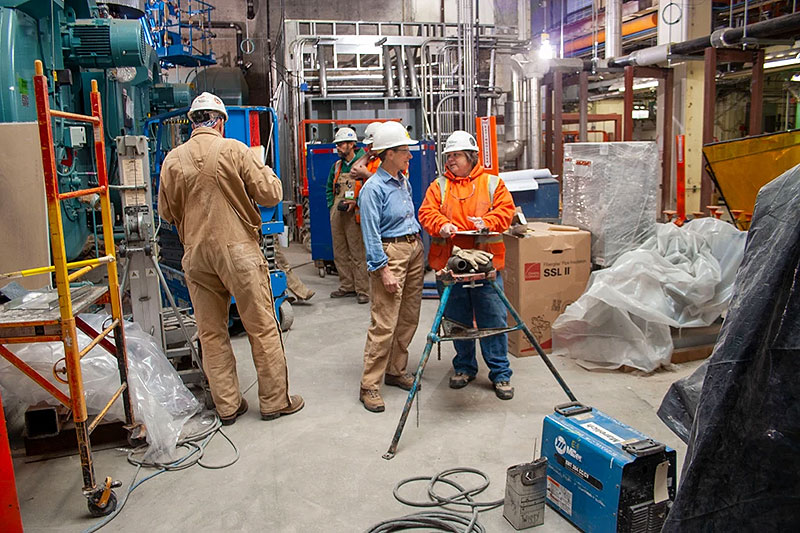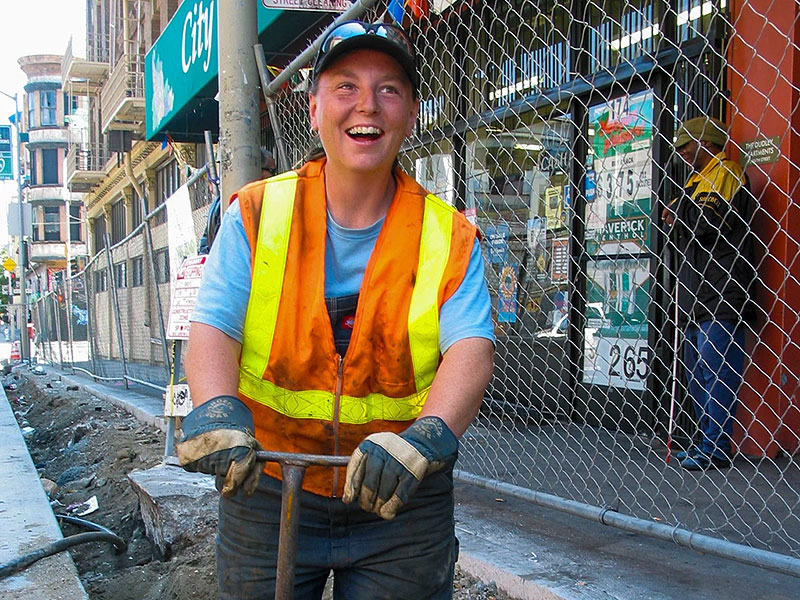San Francisco Women in Construction
I was there . . .
by Molly Martin
Originally published as "The T-Shirt" on tradeswomn musings, January 2023.
Photo: Molly Martin
I first encountered Dar on a job site. The contractor had moved me there so he could meet affirmative action requirements for females on the job. This was a popular practice. Rather than just hiring more women, the company would hire one woman and move her around from job to job so monitors would count the same woman repeatedly. The job, a low-income housing project in Chinatown, received federal funding and so had to meet federal affirmative action goals for women and minorities. This was in 1980 when some regulators actually took affirmative action laws seriously and monitored job sites. Those days are long gone. (Affirmative action in the construction industry really only lasted a short time before Reagan killed it. In California the death knell was dealt in 1996 when Ward Connerly put affirmative action on the ballot. In the meantime some of us were able to get a foot in the door and advocate for the hiring of more women. But women still make up only about three percent of the construction workforce. We were the forgotten recipients of affirmative action and we could benefit from a renewed commitment to it now as the Supreme Court threatens to end it entirely.)
Art by Victoria Hamlin
In those days women would often ignore each other when we were dispatched to the same job. We tried to be invisible and often, when there was only one of us, we got away with it. But as soon as two women started talking or working together, an undercurrent of anxiety rippled among the men. For a brief period on one job I got to work with a female apprentice.
“What do you two talk about?” asked one of the electricians. “Are you talking about the size of our dicks?”
This hadn’t occurred to me. Women might talk about the harassment we endured on the job or, more likely, how to work together to complete the job at hand. Dicks, drawn in profusion on the walls of the porta potties, did seem to hold a prominent place in the imaginations of some of our coworkers.
Kathryn (Kathy) Goodwin
Photo: Victoria Hamlin
Women knew that if we spoke to each other our male coworkers would notice. Straight women didn’t want to be painted with the dyke brush, and most lesbians were still in the closet and didn’t want the brush either. Dar didn’t worry about such implications. She was a big mouthy white woman with buck teeth and a head of bleached blond hair. On the job site you couldn’t miss her. She did not melt into the woodwork. My first day on that job, the Chinatown low-income housing project, she introduced herself as we passed each other on the deck.
“So you’re the affirmative action hire,” she said. “I guess they needed another chick.”
I wasn’t wild about being called a chick, but she had a point. Federal affirmative action regulations were the only reason I was on that job. Our short conversation made me think Dar didn’t like women any more than the men on the job did. She didn’t seem like a feminist sister.
Jake Calabro sewage treatment plant utility plumber.
Photo Victoria Hamlin
For a couple of days I was pulling Romex through holes punched in metal framing. Then they pulled me off that job and put me on another where the regulations said they needed a woman. Fine with me. It all paid the same—a good wage previously reserved for men only. Dar was likely in the same boat. The plumbing contractors had a reputation for hiring even fewer women than the electrical guys. After they could check off the number of female hours worked, they could lay us off.
A couple of years later after a couple more layoffs, I scored a full-time maintenance job with the San Francisco Water Department. I worked out of a corporation yard in the southeast industrial area of the city, looking after all the motors that ran pumps that supplied water to the city. That’s when I ran into Dar again. She had been hired for a job in the plumbing division. The crews of plumbers worked installing new services all over the city, usually in big holes in the street. Or they might be required to repair a main break. The job was wet and muddy.
Molly Martin and Kathy Goodwin
Photo Victoria Hamlin
I didn’t see much of Dar, as the plumbers were out of the yard working in the street all day. But I heard about her. A story in the grapevine told of Dar punching out a coworker who had harassed her while they worked in a trench. I never heard what was said. That was before the rule was imposed that fighting on the job would get you fired immediately. Dar was not the first plumber to make use of fists to manage a dispute, but she was the last to do so and avoid getting fired.
The day I saw the T-shirt was a maintenance nightmare for the water department. One of the big pump stations that housed 100 HP motors flooded. The motors sat in wells in the concrete floor and so were vulnerable to being overtaken by the quickly rising water. I could see it wouldn’t be long until the motors were under water. The team of plumbers worked fast to staunch the leak.
Carole Lee
Photo Victoria Hamlin
My only job as electrician was to cut the power to the motors and that was just a matter of disconnecting circuit breakers in a huge panel on a higher level, though if the water rose high enough that panel, too, would be in peril.
That’s when I spotted Dar, down in the pit with a cluster of men. She wore a T-shirt with a message in big print:
- Feeling a little sexy?
- Go fuck yourself
No one said anything aloud about the message on Dar’s shirt, but it shocked me. I couldn’t imagine wearing it myself, as much as I agreed with the sentiment. I didn’t have the guts to wear that shirt.
I had to give Dar credit. Maybe she wasn’t my kind of feminist, but she was some kind of feminist.
Amy Gray Schlink
Photo Victoria Hamlin


